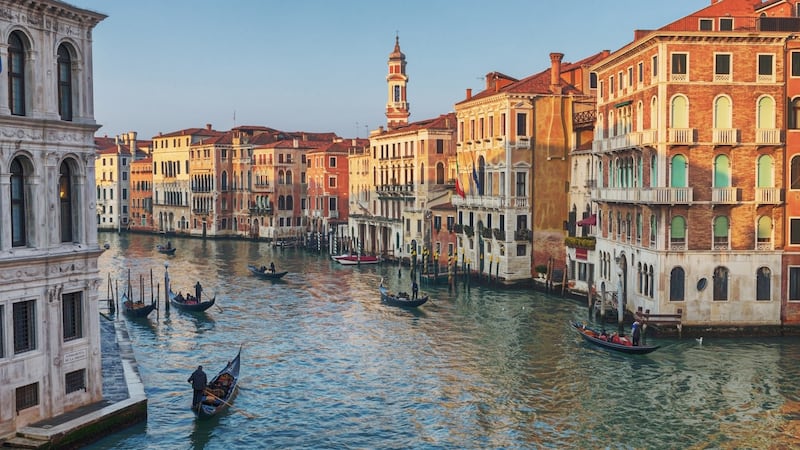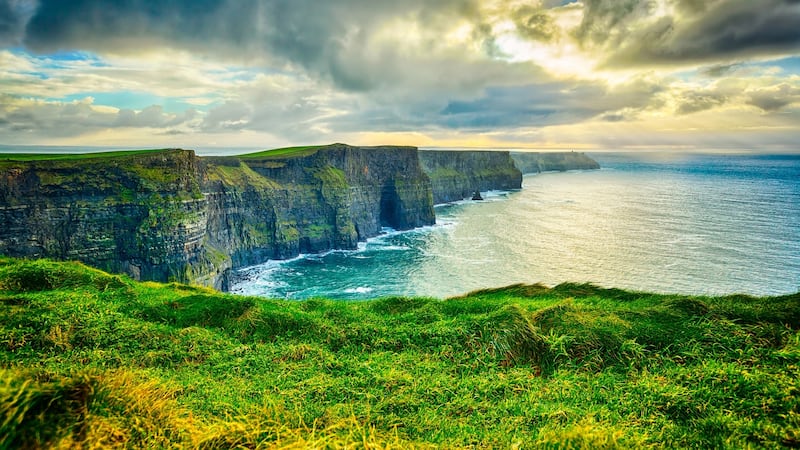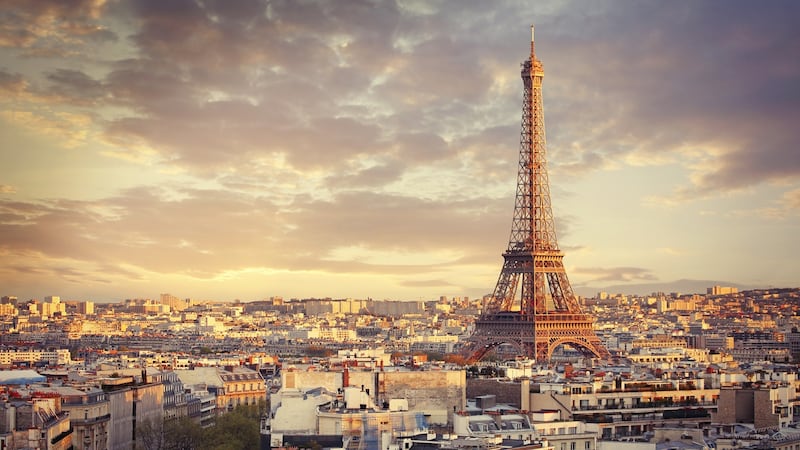To get an idea of how tricky it is to predict the next 50 years of tourism and travel, we only have to look at what’s happened in the past 10 years.
Who would have known that Airbnb – barely a decade old now – would cause so many people to swap hotels for locals’ homes?
Who’d have thought that, for a time, people’s travel plans would be dictated by a volcano in Iceland?

Who would have guessed that tourism to Northern Ireland would have been boosted so much by a TV fantasy featuring lots of dragons and even more bare flesh?
Terrorism. Economic collapse. The whims of the travelling public. So much can happen to change where we’ll go between now and 2069 – and what we’ll do while there.
Yet, there are things happening today – emerging trends, environmental changes, technological advances – that mean we can have a pretty good guess at what is likely to happen on a broader level.
While it’s unlikely to involve jetpacks (for most of us) and trips to other planets (just yet), there might be some sci-fi elements to your future holidays.
Self-driving cars will be a big thing. You won’t expect a human at hotel check-ins. You’ll eventually fly on electric-powered aircraft. And, if you’re not feeling up to the trip, virtual reality might mean you won’t even have to leave your sittingroom to go on a world tour.
Last-chance tourism
If 2019 has offered one major clue to the future of tourism, it’s this: it has grown so much in the past 50 years, that it’s become a bit of a problem. In our future quest for the perfect holiday, we’re going to need to make sure we don’t take things too far.
We all know about those places you’re supposed to see before you die. Countless articles have been written. Entire Rough Guides. Many TV travel shows.
The future is supposed to be about getting an experience before you pop out of existence. The twist is that some tourism is increasingly about seeing a place before it dies. It's called "last-chance tourism".
"It's already been there with people who take cruises to the Arctic to take a look at the ice before that opportunity goes," explains Mark Henry, central marketing director at Tourism Ireland. "And people are even visiting glaciers in Europe because these things are melting and mightn't be there in a generation. Now we're reaching a point where some of the more established heritage sites that happen to be very close to the coast are threatened by rising sea levels."
Last year, a Unesco report looked at 49 world heritage sites in low-lying areas of the Mediterranean, and found that all but two of those are under threat from flooding or erosion by 2100. Venice is among the Italian sites already under severe threat.
The irony is that the chance of disaster might bring more tourists. “I mean who wouldn’t want to see Venice before it’s potentially completely submerged?” asks Henry.
Too many people, it would seem.
Overtourism
The idea of “overtourism” has gone mainstream. Increasingly, the places we want to see will come at a cost to us, so as to offset the cost to the place itself.
Venice has become a poster child for overtourism, not least thanks to the huge cruise ships pulling in on a daily basis and – on one widely shared case this year – running out of control. It has decided to charge for short-stay entry into the city, while taking some other notable measures such as fining a German couple for making coffee on the steps of the Rialto bridge with their camp stove, and then chucking them out for good measure.

It is not alone. Rome has started fining tourists for their behaviour at the Trevi Fountain.
Machu Pichu has become ticketed, to stem the flow. The queues down the slopes of Everest show just how much tourism is impacting even on places which were supposed to be out of reach.
There were 1.4 billion international tourists in 2018, with the graph heading towards 3 billion by 2040. Many of them will want to go to exactly the same places we’ve always gone. But those places are already struggling to cope.
Henry remembers a conversation, a few years ago, with a tourism official in Paris, where the mayor was talking about attracting more tourists over the coming decade. “But I’ve only got one Eiffel Tower,” Henry was told.
On a local level, Henry points out that we can bring more tourists to Dublin but Trinity College can hardly make the library's Long Room any bigger.
It means the future will be not just be about discovering places off the beaten the track, but being directed there instead of the usual spots. Already, Tourism Ireland has been marketing the cliffs at Slieve League in Donegal instead of the well-known and busier Cliffs of Moher in Clare. Meanwhile, there has been a call-out for projects to take tourism into the lesser-seen parts of the country.
Instead of wandering off the beaten path, in other words, we are increasingly going to be directed off it.
Bigger and better aircraft
The growth in the world’s adult population, and growth of the global middle-class – the majority of world is now calculated to be middle-class or wealthier – means people will have more time and money for travel. It is pushing tourism growth east. China will soon overtake the US as having the most airline passengers in and out of the country, while the UK will drop from third place, overtaken by India and Indonesia.
There will, in fact, be a predicted 8.2 billion airline passengers by 2037, which is a big a problem given the climate emergency. With demands on airlines to cut emissions – and for people to fly less – the race is on to develop aircraft that will take us around the world without destroying it.
It’s already happening in small steps. This year’s Paris Airshow saw the launch of the first commercial electric-powered jet. It can fly 1,000km at a top speed of 440km per hour. It’s main problem? It only carries nine people.
There is a clamour to develop better and, more importantly, bigger aircraft, and while the promise of electric-powered jets taking you on your holidays in the 2030s might be optimistic, there’s a good chance there will be electric-fuel hybrid planes by then.
However, this clashes with the promise that your travel times will become much shorter. If you have the money for it, you might again be able to fly at supersonic speeds. Aircraft taking as few as 12 passengers at a time at speeds of four times the speed of sound are currently in development.
Or, we may end up travelling by Hyperloop, the ultrafast, vacuum tube that Elon Musk is spending vast resources on. Just this month he announced that a "pod" travelled along the loop at 463kph.
Unfortunately, the pod exploded when it hit that speed, which wouldn’t be an ideal way to start a holiday.
Sustainable travel
A new generation may take environmental matters into their own hands and refuse air travel – or at least cut down on it.
"There's a trend happening right now where people say I'll only take one flight per year," says Nick Hall of the Digital Tourism Think Tank. "It's something that will be increasingly on the minds of the public, and there's definitely a growing interest among places in promoting the staycation and promoting sustainable travel."
As is happening in Finland, where the hotels, restaurants and sights being marketed to you may well be the ones that have scored highest for environmental responsibility.

“People are always seeking fun, especially when you live in a rainy cloudy or dark place. I think it’s a human instinct, you need that top up of good weather,” says Hall. “But there’s a big shift towards a certain type of experience. Millennial travellers want to take away something of value, so they want to be able to learn a new skill or meet new friends that will stay with them forever. The idea of sitting on a beach doing nothing for five days is less and less dominating what is driving interest.”
Henry also sees this. “We see nascent signs of the idea of ‘voluntourism’. It’s a very niche thing but it is possible that, just as airlines will have to offset their carbon form the next decade, people will feel the need to give back or make a contribution to the place that is hosting them.”
The explosion of the “sharing economy” might aid this, with it already so much easier for tourists to organise their trips directly through locals.
Automation
Technology will continue to change not just how we get somewhere, but what happens when get there. For instance, much as it sounds like the realms of science fiction, the self-driving car will have a huge impact.
Arriving in a foreign city 50 years from now, you won’t have to spend the first half hour in your rental car jolting horribly on an airport road while trying to remind yourself which direction to go at the roundabout. Instead, the car will simply take you wherever you ask.
“One of the biggest fears of overseas visitors who come from a country that drives on the right is the challenge of driving on an Irish country road,” says Henry.
In the future, a tourist will only have to call up their car’s tour of the Wild Atlantic Way and off they’ll go. They’ll be able to take pictures without having to worry about taking their eyes of the narrow road.
This automation will extend throughout your holiday. Already, some Premier Inns in the UK allow for automated check-in, and in an industry that often struggles with labour shortages, this could be a great help. But a balance will be needed.
“If you listen to any futurologist they will tell you that any job that can be automated will be automated,” says Hall. Still, we’ll want that “very simple welcome or interaction with people on face to face level… machines can’t replicate that to anywhere near the same degree of success”.
Rediscovery and virtual reality
Finally, where will we travel to? From Ireland, many of us will probably keep to the standard beach breaks, family holidays and romantic getaways in France, Spain, Italy, and the usual spots. But where else we travel will, to a certain extent, be down to chance. Things can change very quickly.
International terrorism has seen a retreat from many European tourists, who have opted to stay closer to home and in traditional spots. But even so, tourism to North African countries such as Tunisia – where tourist number dropped sharply following attacks – has begun to rebound. Syria had 8.5 million tourists as recently as 2010 and, as with many parts of that region, there is always the chance that an area closed off for one generation may be opened up for the next, much as happened with the former Soviet Bloc countries in the 1990s.

So who’s to say that by 2069 there won’t be a cry of “pack up, grab the kids, next stop, North Korea”?
Or maybe we won’t need to go anywhere at all. For a touch of the sci-fi that really isn’t that far away, a holiday of the future could mean not having to leave your home at all.
“Will we reach a stage where the virtual reality tour of the Eiffel Tower will be better than the real thing?” asks Mark Henry. “Because you won’t have the queues, you’ll be able to take it whatever place you want. And frankly, you can fly off the thing and around it if you want to. Not in the next decade but beyond that, will we reach a point where at least people can tick the boxes of major sights without travelling there in person?”
Whatever lies ahead, we’ll always have virtual reality Paris.
Shane Hegarty is a former Irish Times journalist and author of the Darkmouth series of children’s books. His latest novel Boot is out now. This article is part of an Irish Times series on what the future holds for us and the next generations
Space tourism
Given that the first space tourist, Denis Tito, went on his holiday in orbit as far back as 2001, it is a little surprising that space tourism has been somewhat grounded in recent years. It is 2009 since the last person spent tens of millions of dollars for a break on the International Space Station.
Since then, there have been plenty of promises, with the likes of Elon Musk and rival Space Adventures saying they plan to send passengers on a trip around the moon (the latter charging a mere US$100,000,000). But there have been plenty of setbacks, with Richard Branson’s VirginGalactic’s promise of sub-orbital flights by 2015 delayed by the mid-air break-up of its test vehicle.
Still, space tourism is on its way again. Nasa is opening up the space station to tourists from next year – if they have the US$59 million to spare. And after all this promise, there is real belief that the next year or two will see the likes of Jeff Bezos's Blue Origin taking passengers to the edge of space for a short trip.
It will not be cheap, and nothing will be more out of the price range of ordinary people than a quick hop to the edge of space to float about for a few minutes before dropping back down again. Nothing, that is, except for a month long trip to the ISS or a jaunt around the moon.
Once they start the flights and – barring disaster – it will finally see the start of a new frontier in travel. After which, the sky’s no longer the limit.
Five future travel trends
Lots of sharing: Airbnb is only the beginning. What if you borrow a local's car for a short time rather than rent one? Or if your tour guide is a friendly local, as seen with the Little Museum of Dublin's City of a Thousand Welcomes initiative? Sharing could be a big part of that search for "authentic" experience.
Last-chance tourism: Climate change and overtourism mean that some places will need protection, and others might need saving. But there will be some things – such as glaciers – that will be on tourist lists before they disappear.
Voluntourism: No longer content to just laze about on a beach, and aware of their impact wherever they go, millennial travellers might increasingly look to give something back while they're away.
Computer says hello: Automation will be big. Whether it's self-driving cars or automated services in hotels, the rise of the machines will be a big part of your future trips.
Big screen to big country: Northern Ireland has new-found tourism thanks to Game of Thrones, as has Croatia. New Zealand has Hobbiton and the Lord of the Rings landscape. The ancient Skelligs suddenly became Star Wars extras. Look out for more and more locations building attractions out of the next big thing.











